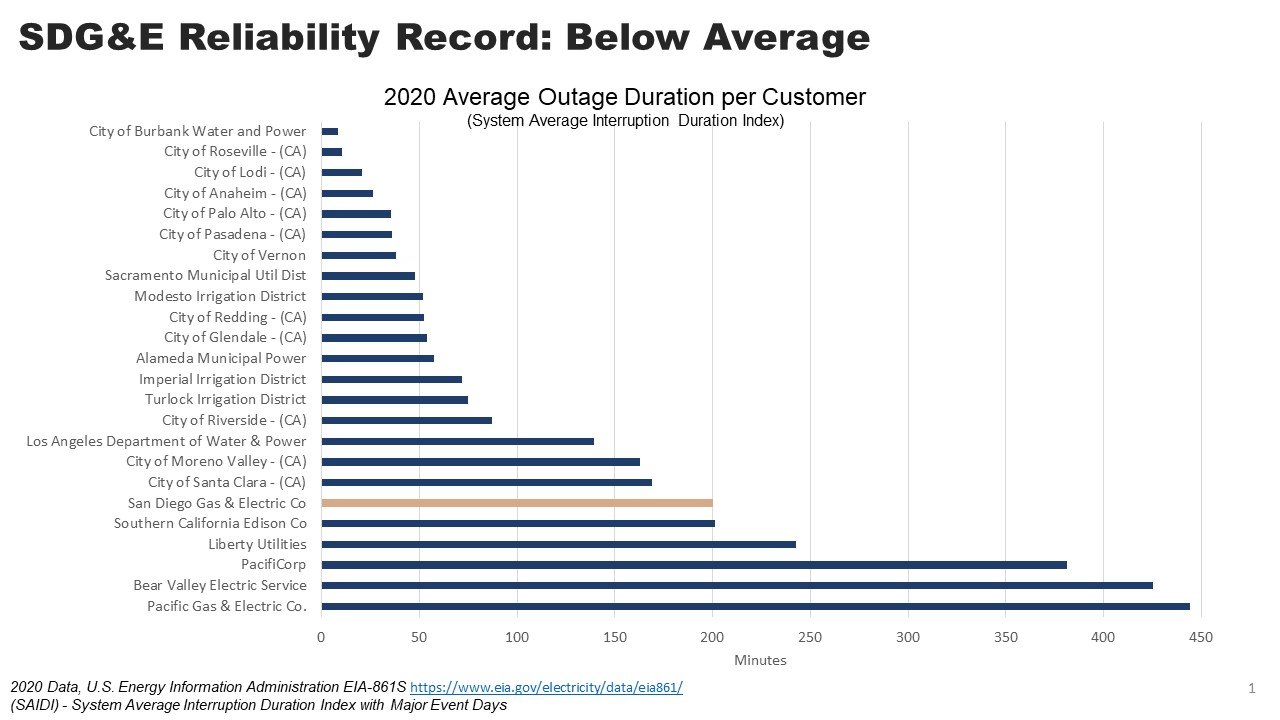
Facts on SDG&E
-
Reliability
SDG&E provides below-average reliability compared to other California utilities. Source Data: U.S. Energy Information Administration, 2020 Data, EIA-861S
-
Renewable Energy
SDG&E provides below-average renewable energy content compared to other California electricity providers (renewable energy as defined by the California Public Utilities Code). Source Data: California Power Content Labels as reported by the California Energy Commission.
-
GHG-Free Energy
SDG&E provides below-average greenhouse-gas-free energy content compared to other California electricity providers. [Greenhouse-gas-free energy = (renewable energy) – (biomass & biogas) + (large hydroelectric) + (nuclear)]. Source Data: California Power Content Labels as reported by the California Energy Commission.
-

Rates
SDG&E charges electricity customers the highest rates in the state. Source Data: U.S. Energy Information Administration, 2020 Data, Table T6, Residential Sector, California Utilities with over 100,000 customers.
-
Profits
SDG&E reaps profits of over 2.25 million dollars per day. Data Source: Sempra Energy 10K. Approximately half of those profits come from City of San Diego ratepayers according to the city’s franchise agreement study. Data Source: Electric and Gas Franchise Agreements Consultant Report (2020)
FAQs
-
Yes. According to the U.S. Bureau of Labor Statistics SDG&E charges the highest rates in the country at 41 cents/kWh. Even the island-based utility in Hawaii charges less despite being physically isolated without the ability to buy and sell electricity to a neighboring state’s electricity providers.
-
Yes. SDG&E actively opposes reach codes and ordinances designed to transition buildings from gas supply to electricity. Read SDG&E’s letter to Solana Beach, CA opposing building electrification and its letter to the La Mesa, CA opposing building electrification.
-
Yes. SDG&E and its fellow utilities have asked for the California Public Utilities Commission to dramatically reduce the value of rooftop solar. Source: CPUC’s proposed decision on net energy metering. The changes would effectively eliminate future rooftop solar installations in California by reducing the installation pace by 95%. Source: PV magazine survey coverage.
-




